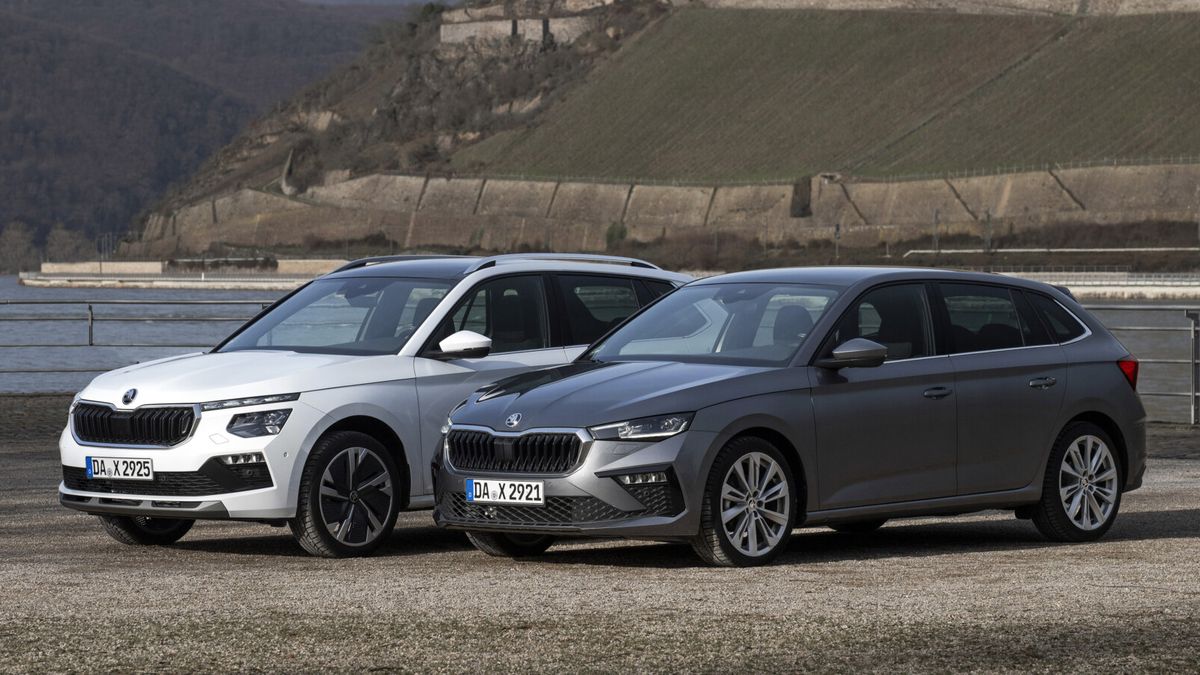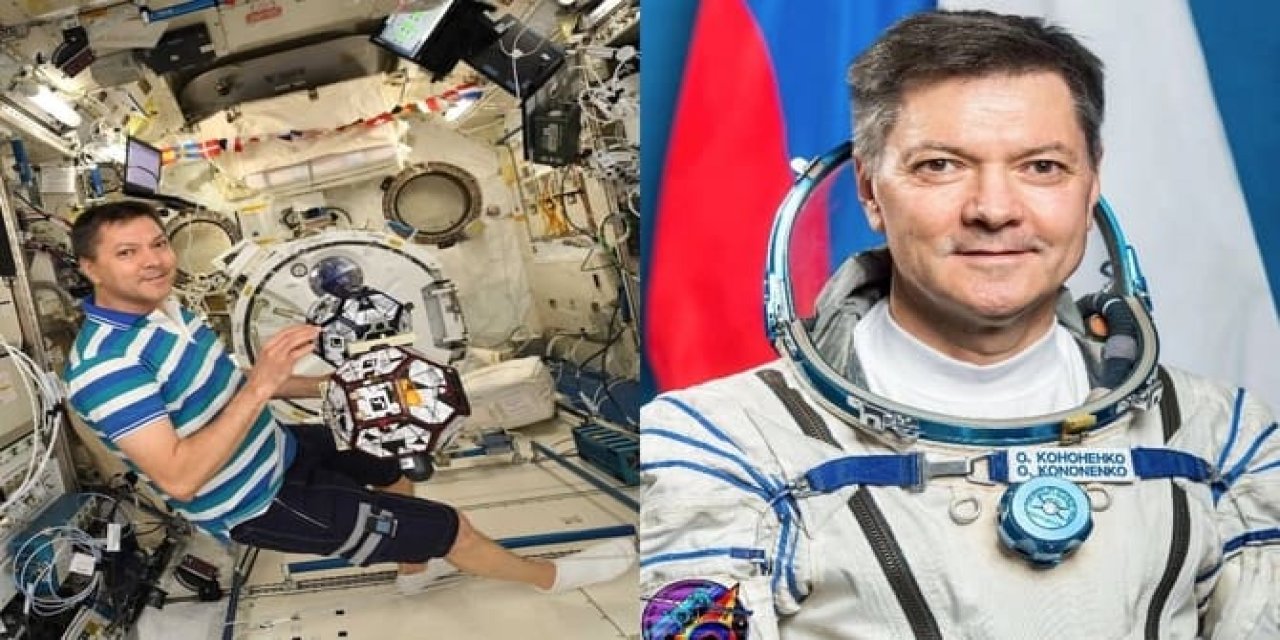The sibling pair of hatchback Scala and crossover Kamiq quickly took hold on the market since its premiere in 2019 – over 670,000 customers have already purchased them (although significantly more were caught by the fashionable Kamiq, which became the brand’s second best-selling model). After four years on the market, however, it was time for their rejuvenation, which Škoda took (by facelift standards) quite thoroughly…
What’s really new?
From the outside
You can recognize the news at first glance by the modified front lights – the Scala has a thinner two-piece instead of a single LED line, the Kamiq has kept the split lights with an LED daytime running light strip, (dynamic) blinkers on top (the latter is now thinner) and a dipped/main beam module below ( which is, on the contrary, larger). Both models can be equipped with anti-glare Matrix LED technology (for an extra charge of 18,000) with even more powerful high beams (50% for the Scala and 40% for the Kamiq).
Photo: Škoda Auto
In terms of design, nothing has changed radically, only the front part has undergone a slight refresh. It is mainly intended to help Scala, whose sales are lagging behind expectations.
In addition, both innovations have a modified octagonal mask and a new bumper with integrated LED fog lights as standard. The rear bumper and the graphics of the rear lights, which in the top variant can have a dynamic blinker, are also subtly modified. The stern is decorated with a new ŠKODA logo, the range of body paints (nine for both models) and wheel designs (16″ to 18″) has also changed slightly.
Photo: Škoda Auto
Inside
In the cabin, you can look forward to the 8″ digital instrument panel, which has now become part of the standard equipment (on request, it can have a larger and more configurable 10″ display). Infotainment basically has an 8″ touch screen (with rotating control wheels) and the version with navigation has a completely touch screen 9″ (both systems can support wireless Android Auto and Apple CarPlay, although the basic system is only for an extra charge), in addition you can have up to four USB-C connectors (power 45 W) and an improved phone box with inductive charging (15 W with cooling). The handy climate control panel is now even more handy as it has buttons to control the ventilation speed.
Photo: Škoda Auto
Thanks to the new colors and materials, the interiors of both cars looked pleasant.
Both models have also switched to a new style of interior lines (Loft, Lodge, Suite and Monte Carlo) with a more sophisticated material and color concept (matching seat upholstery and dashboard), so you will be more happy to be inside. Sustainable (natural and recycled) materials are used in the production of upholstery (door panels and ceiling using plant fibers from hemp and kenaf), carpets and flooring.
Photo: Škoda Auto
Škoda has also worked on practicality, both models now have a virtual pedal function for the trunk lid with electric control (to open it, all you need is a foot gesture under the bumper, which is useful when your hands are full), at the back of the central tunnel there is a new removable compartment with a flexible you will also find handy phone pockets in the cup holder and on the back of the front seat backrests.
Photo: Škoda Auto
A few practical little things always come in handy.
Under the hood
Don’t worry, no electrification (even partial) is taking place! The range of engines has not changed optically (1.0 TSI, 1.5 TSI), but all power units are now available in the latest evo2 generation with improved hardware (mainly the particulate filter must not be missing) and software for even more economical operation (and lower emissions) .
PowerTorque Transmission1.0 TSI evo270 kW / 95 k175 Nmmanual, 5 st1.0 TSI evo285 kW / 115 k200 Nmmanual, 6 st1.0 TSI evo285 kW / 115 k200 NmDSG 7 st1.5 TSI ACT+ evo2110 kW / 150 k250 Nmmanual, 6 st1 .5 TSI ACT+ evo2110 kW / 150 k250 NmDSG 7 st
The most powerful three-cylinder engine has benefited from the modifications, which has improved by 4 kW (it now has 85 kW) – in addition, it delivers its maximum power 500 rpm lower and in a wider range, the range of the maximum pull of 200 Nm is also wider.
The four-cylinder, in turn, has improved Active Cylinder Shutdown (ACT+) that works in a wider range of conditions, and automatic disconnection and reconnection of the middle pair of cylinders should now be even smoother.
How does it drive?
Of course, practically the same as before, because the engineers did not touch the tuning of the chassis, but it was not particularly necessary either, because both cars drive very nicely for compacts – stable and pleasantly light-footed, and at the same time comfortable and safe. The mechanical changes did not affect the drive too much, the gear ratios of the gearboxes were only slightly adjusted and the engines also do not have a fundamentally different character.
Photo: Škoda Auto
Both compacts drive very pleasantly and easily and naturally drive.
The more powerful three-cylinder 1.0 TSI (85 kW, the weaker one was not part of the test fleet) is a hair more well-mannered and more willing to pick up from low revs, but it still needs to rev above two thousand and gives its best only in the last third of the rev counter with an enthusiastic growl.
The four-cylinder 1.5 TSI (110 kW) could teach refinement (disconnecting and connecting a pair of cylinders you really don’t notice in practice) and its biggest advantage is a strong pull in the middle revs, it starts to struggle at the top.
The 1.0 TSI (85 kW) is therefore not only a choice for the frugal, but also a delight for enthusiastic drivers, as both cars drive very nicely with the lighter engine in the bow. It also gets along very well with both manual and automatic transmissions, so choose according to your taste. The four-cylinder will make the most sense for those who can’t stand three-cups and are happy to pay extra for quieter and smoother running. And that includes the gearbox, because with the DSG the engine seemed significantly more satisfying, the manual had a “sticky” clutch and less satisfactory lever action.
Photo: Škoda Auto
How much does it cost?
The price list of both models has long been public and optically it does not look bad, for the very basic Scala (1.0 TSI 70 kW in Selection equipment) you will pay only 459,900 CZK (the more powerful engine with 85 kW is 20 thousand more expensive). But you have to cut through, for example, metal wheels, manual air conditioning or a plastic steering wheel (other things can be solved, but you won’t buy any leather package), which is quite a shame for a car for almost half a million.
1.0 TSI 70 kW1.0 TSI 85 kW1.5 TSI 110 kWSelection459,900 CZK479,900 CZK-Top Selection-519,900 CZK559,900 CZKMonte Carlo-559,900 CZK599,900 CZKFirst Edition-599,900 CZK679,900 CZK (DSG only)
For the DSG transmission, the 1.0 TSI 85 kW and 1.5 TSI 110 kW engines cost an additional CZK 40,000, Kamiq prices CZK +20,000.
It makes much more sense to pay 40,000 more for the higher Top Selection equipment (alloy wheels, Climatronic and leather package, plus a rain sensor and self-dimming mirror, ambient lighting, wireless phone mirroring with inductive charging, extended fifth door glass for the Scala and many another), but you can only get it with a more powerful engine, and it’s 519,900 CZK all at once. You can buy other tempting items in advantageous packages, which is an advantage for some customers, for others it’s the opposite. But you can have a very nicely equipped Scala for about 550,000.
2024-02-07 11:00:00
#lights #Whats #modernized #Škoda #Scala #Kamiq #drive #Garáž.cz


